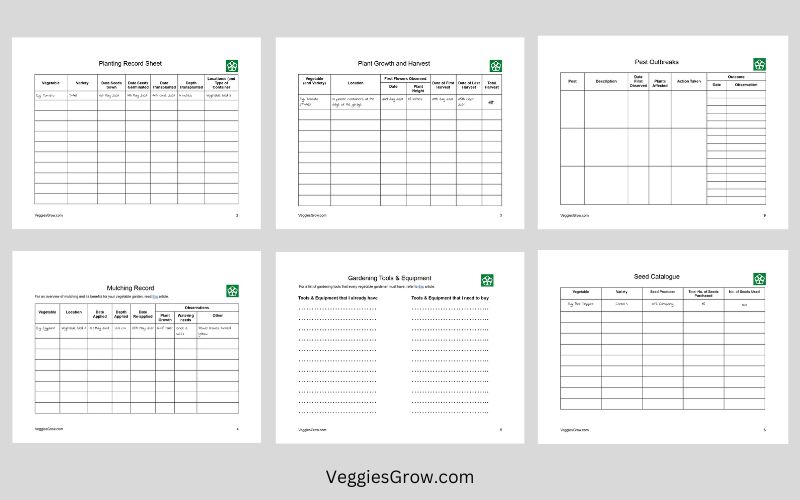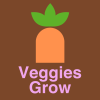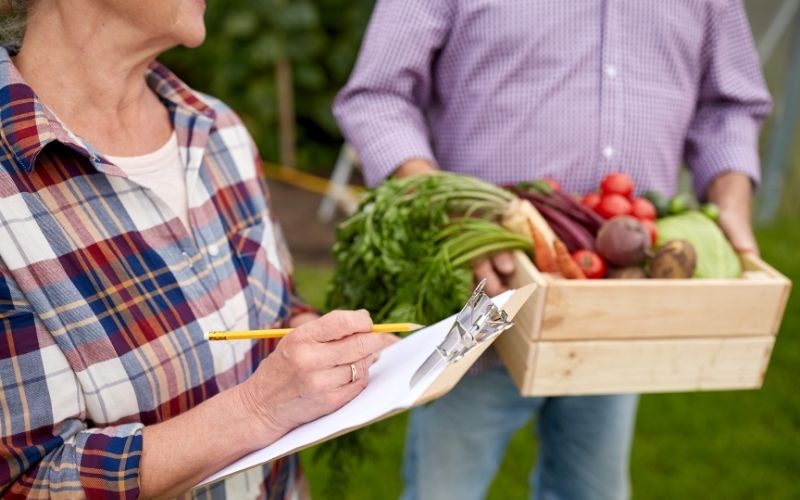A vegetable garden journal may not seem very important to you when you are only planning or starting your first vegetable garden. However, keeping a garden journal will help you have a thorough record of all that has happened in your garden. You can use it to deal with any problems that come up this season and to improve and make faster progress in your vegetable gardening journey.
What should be included in a vegetable garden journal?
There are just four types of information that you must include in your vegetable garden journal.
They are:
- Actions you took and when
- Changes in your vegetable plants and when you observed the change
- Observations of the environment around your vegetable plants and when the observation was made
- Your vegetable garden layout for the season
Actions that you took will include:
- Planting seeds
- Transplanting seedlings
- Watering garden
- Pruning plants
- Staking plants
- Adding fertilizer
- Adding compost
- Adding mulch
- Harvesting
Changes in your vegetable plants will include:
- Seed germination
- Changes in the number of leaves, width, and height of the plant
- Colour changes of leaves
- the apperance of flowers
- when flowers bloom
- when fruiting vegetables start to emerge
- Bolting
- Damage by insects and other pests
- Changes in fruit colour
Observations of the environment surrounding your vegetable plants will include:
- Pollinators
- Pests near and on vegetable plants (can be known or suspected pests)
- Beneficial insects
- The amount of sunlight
- The amount of rain
- Temperature and humidity
- Wind
- Adverse weather events
- Changes in the soil (dried out, waterlogged, colour changes etc.)
To record your vegetable garden layout, you can simply draw the outline of your garden and mark where you will grow or are growing each type of vegetable plant. Make sure to include different varieties separately if you are growing multiple varieties of the same vegetable at the same time so that you can compare between varieties.
How do I organize my vegetable garden notes?
A vegetable garden journal should be simple to use. It can be kept on paper or in as an e-copy, either online or offline, depending on what you are comfortable with.
Here are a few ways in which you can keep a vegetable gardening journal.
- A simple paper notebook
- Note-taking app (One Note, Evernote, Apple Notes etc.)
- Word document or Excel sheet saved on your computer
- Document saved in a cloud location (OneDrive, Google Docs etc.)
- Printable garden journal pages in a paper folder
- Editable garden journal pages saved in a folder on your computer
- Printed garden journal
The best option for you will be to continue using a note-taking system that you already use daily rather than trying to learn or get used to a new system. For example, if you use only paper notebooks to take notes, either get a new notebook or devote a new section in your existing notebook for your gardening journal. If you already keep all your notes or documents stored in Google Drive, you can just add a new folder, a Google sheet or a Google doc.
FREE Vegetable Gardening Journal Templates
To make it easier for you to get started, you can download our FREE Vegetable Garden Journal Templates. You can either print out the templates and start using them right away or use them as inspiration to create your own templates.

Journal Templates included:
- Planting Record Sheet
- Plant Growth and Harvest
- Mulching Record
- Gardening Tools & Equipment
- Seed Catalogue
- Expense Tracker
- Leaf Colour Changes
- Pest Outbreaks

